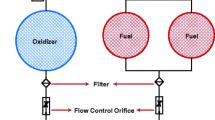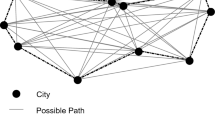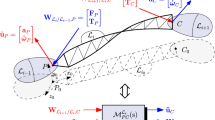Abstract
One of the main tasks involving the development of a new spacecraft is how to distribute its electronic equipment over its structural panels. This problem is first addressed in the conception phase of the design and is traditionally carried out by a group of system engineers. It is a multidisciplinary task since structural, thermal, dynamics, and integration issues, must all be taken into account simultaneously. Usually, the initial positioning is done based on the engineers’ experience, followed by an analysis stage (thermal, structural, etc.) in which the design performance and constraints are verified. This process takes time and hence, as soon as a good feasible design is found, it is taken as the baseline. This precludes a broad exploration of the conceptual design space, which usually leads to a suboptimal layout design. In this paper the main features of a multi-objective methodology are presented which were developed to automatically find solutions for a three-dimensional layout of equipment in spacecraft. It includes mass, inertia, thermal and subsystem requirements and geometric constraints using a multi-objective approach that combines CAD and optimization tools in an integrated environment. As a case study, the methodology was applied to the layout optimization of the Brazilian Multi-Mission Space Platform (MMP) equipment. The main results are presented.









Similar content being viewed by others
Abbreviations
- \( Ang_{XX\_calc} \), \( Ang_{YY\_calc} \), \( Ang_{ZZ\_calc} \) (°, °, °):
-
Angles between three principal satellite axes of inertia relating to the satellite’s Cartesian coordinate system
- \( Ang_{XX\_{\it target}} \), \( Ang_{YY\_{\it target}} \), \( Ang_{ZZ\_{\it target}} \) (°, °, °):
-
Target angles between three principal satellite axes of inertia relating to the satellite’s Cartesian coordinate system
- b (m):
-
Width of equipment
- h (m):
-
Height of equipment
- l (m):
-
Length of equipment
- L (m):
-
Length of panel
- N :
-
Number of pieces of equipment
- N p :
-
Number of panels
- N c :
-
Number of cells
- P (W):
-
Thermal power dissipated by equipment
- r (m):
-
Euclidean distance between the center of a piece of equipment and the center of the cell
- q (m,m):
-
Point on a panel coincident to the center of a piece of equipment
- V inter (m3):
-
Interference volume among pieces of equipment
- XCG calc , YCG calc , ZCG calc (m, m, m):
-
Center of mass coordinates of a layout of the equipment
- XCG target , YCG target , ZCG target (m, m, m):
-
Target center of mass coordinates of a layout of the equipment
- i :
-
Index relative to equipments
- j :
-
Index relative to cells
- k :
-
Index relative to panels
- m:
-
Index relative to objective functions
References
Baier H, Pühlhofer T (2003) Approaches for further rationalization in mechanical architecture and structural design of satellites. In: Proceedings of 54th international astronautical congress, Bremen, Germany.
Coello CAC (2006) Evolutionary multi-objective optimization: a historical view of the field. IEEE Comput Intell Mag 1(1):28–36
Cuco APC (2011) Development of a multi-objective methodology for layout optimization of equipment in artificial satellites (in Portuguese). Master degree dissertation, Postgraduate Course in Space Technology and Engineering, INPE
De Sousa FL, Muraoka I, Galski RL (2007) On the optimal positioning of electronic equipment in space platforms. In: Proceedings of the 19th international congress of mechanical engineering, Brasilia, Brasil 2007
Deb K, Agrawal S, Pratab A, Meyarivan T (2002) A fast elitist nondominated sorting genetic algorithm for multi-objective optimization: NSGA-II. IEEE Trans Evol Comput 6(2):182–197
Ferebee MJ Jr, Allen CL (1991) Optimization of payload placement on arbitrary spacecraft. J Spacecr Rockets 28(5):612–614
Ferebee Jr MJ, Powers RB (1987) Optimization of payload mass placement in a dual keel space station. NASA Technical Memorandum 89051, March 1987.
Galski RL, De Sousa FL, Ramos FM (2005) Application of a new multi-objective evolutionary algorithm to the optimum design of a remote sensing satellite constellation. In: Proceedings of the 5th international conference on inverse problems in engineering: theory and practice, vol II. Cambridge, UK G01, 11–15th July 2005.
Hengeveld DW, Braun JE, Eckhard AG, Williams AD (2011) Optimal placement of electronic components to minimize heat flux nonuniformities. J Spacecr Rockets 48(4):556–563
Hwang JT, Lee DY, Cutler JW, Martins JRRA (2014) Large-scale multidisciplinary optimization of a small satellite’s design and operation. J Spacecr Rockets. doi:10.2514/1.A32751
Jackson B, Norgard J (2002) A stochastic optimization for determining spacecraft avionics box placement. In: IEEE Aerospace Conference, vol. 5, pp 2373–2382, 2002
Martins JRRA, Lambe AB (2013) Multidisciplinary design optimization: a survey of architectures. AIAA J 51(9):2049–2075. doi:10.2514/1.J051895
Pühlhofer T, Langer H, Baier H, Huber M (2004) Multicriteria and discrete configuration and design optimization with applications for satellites. In: Proceedings of 10th AIAA/ISSMO multidisciplinary analysis and optimization conference, Albany, 30 Aug, 01 Sept 2004.
Sun Z-G, Teng H-F (2003) Optimal layout design of a satellite module. Eng Optim 35(5):513–529
Teng H-F, Sun S-L, Liu D-Q, Li Y-Z (2001) Layout optimization for the objects located within a rotating vessel—a three-dimensional packing problem with behavioral constraints. Comput Oper Res 28:521–535
Teng H-F, Chen Y, Zeng W, Shi Y-J, Hu Q-H (2010) A dual-system variable grain cooperative coevolutionary algorithm: satellite-module layout design. IEEE Trans Evol Comput 14(3):438–455
Wang Y-S, Teng H-F, Shi Y-J (2009) Cooperative co-evolutionary scatter search for satellite module layout design. Eng Comput 26(7):761–785
Zhang B, Teng H-F, Shi Y-J (2008) Layout optimization of satellite module using soft computing techniques. Appl Soft Comput 8:507–521
Acknowledgments
The authors thank ESSS and ESTECO companies for providing the modeFrontier® license. The financial support provided by FAPERJ, Fundação Carlos Chagas Filho de Amparo à Pesquisa do Estado do Rio de Janeiro, FAPESP, Fundação de Amparo à Pesquisa do Estado de São Paulo, and CNPq, Conselho Nacional de Desenvolvimento Científico e Tecnológico, are also gratefully.
Author information
Authors and Affiliations
Corresponding author
Rights and permissions
About this article
Cite this article
Cuco, A.P.C., de Sousa, F.L. & Silva Neto, A.J. A multi-objective methodology for spacecraft equipment layouts. Optim Eng 16, 165–181 (2015). https://doi.org/10.1007/s11081-014-9252-z
Received:
Accepted:
Published:
Issue Date:
DOI: https://doi.org/10.1007/s11081-014-9252-z




